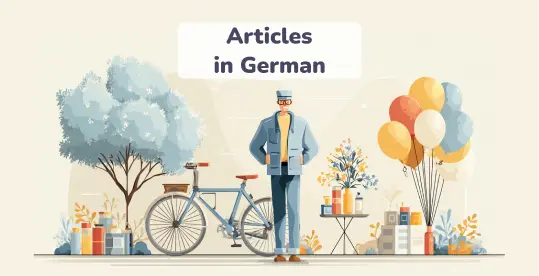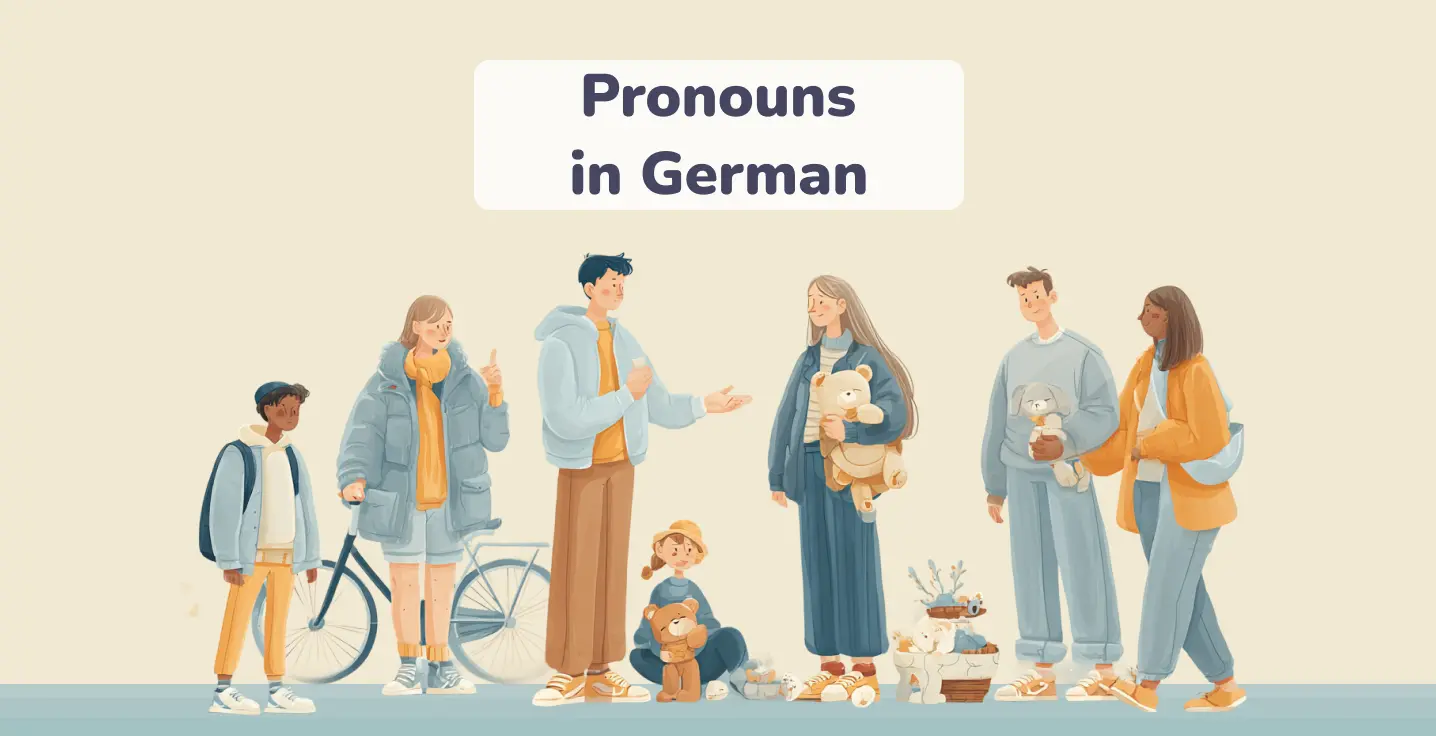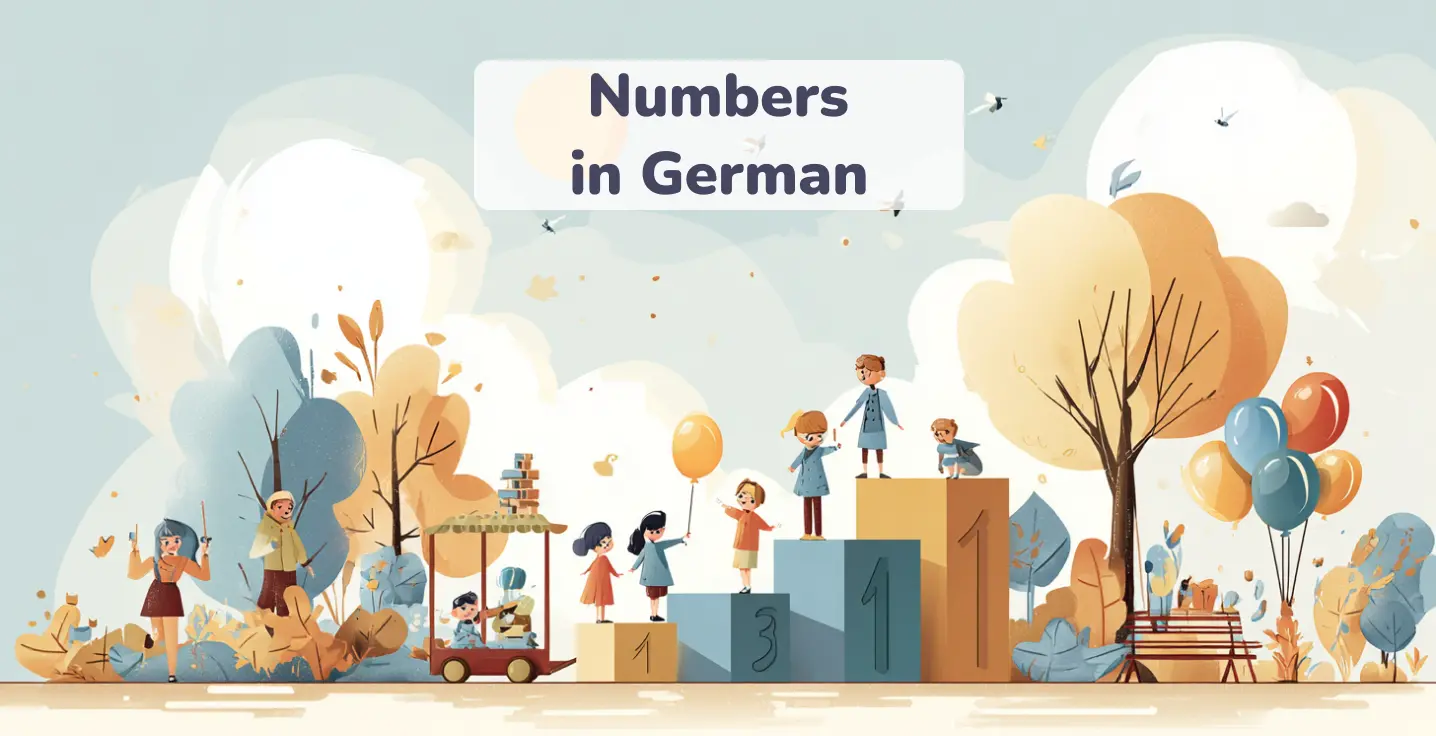What are articles in German?
The application of articles in the German language is wider than in English. Here, they serve multiple purposes, such as indicating their number (singular, plural), and even the case, as they change in accordance with it.
Articles are used with nouns, which always begin with a capital letter, in both singular and plural forms. There are three most common versions,
Let’s look at some examples:
In this scenario, the articles are placed as the subjects. They can move to different parts of a sentence, but they can change depending on the case. Upon reading, you will see it as well. Now, let’s tap into different variations of them.
You can ask: How many articles in German? The answer is more than 16 forms when considering case and gender. And we are going to walk over each of them.
Level up your German with Koto!
Types of articles in German
Der, die and das are not the only options in German. In a situation where you need to speak about a random, unspecified item, you’ll need to use indefinite articles. You may think it sounds a lot like English. With the exception that the German language has many more forms, which are chosen in accordance with gender.
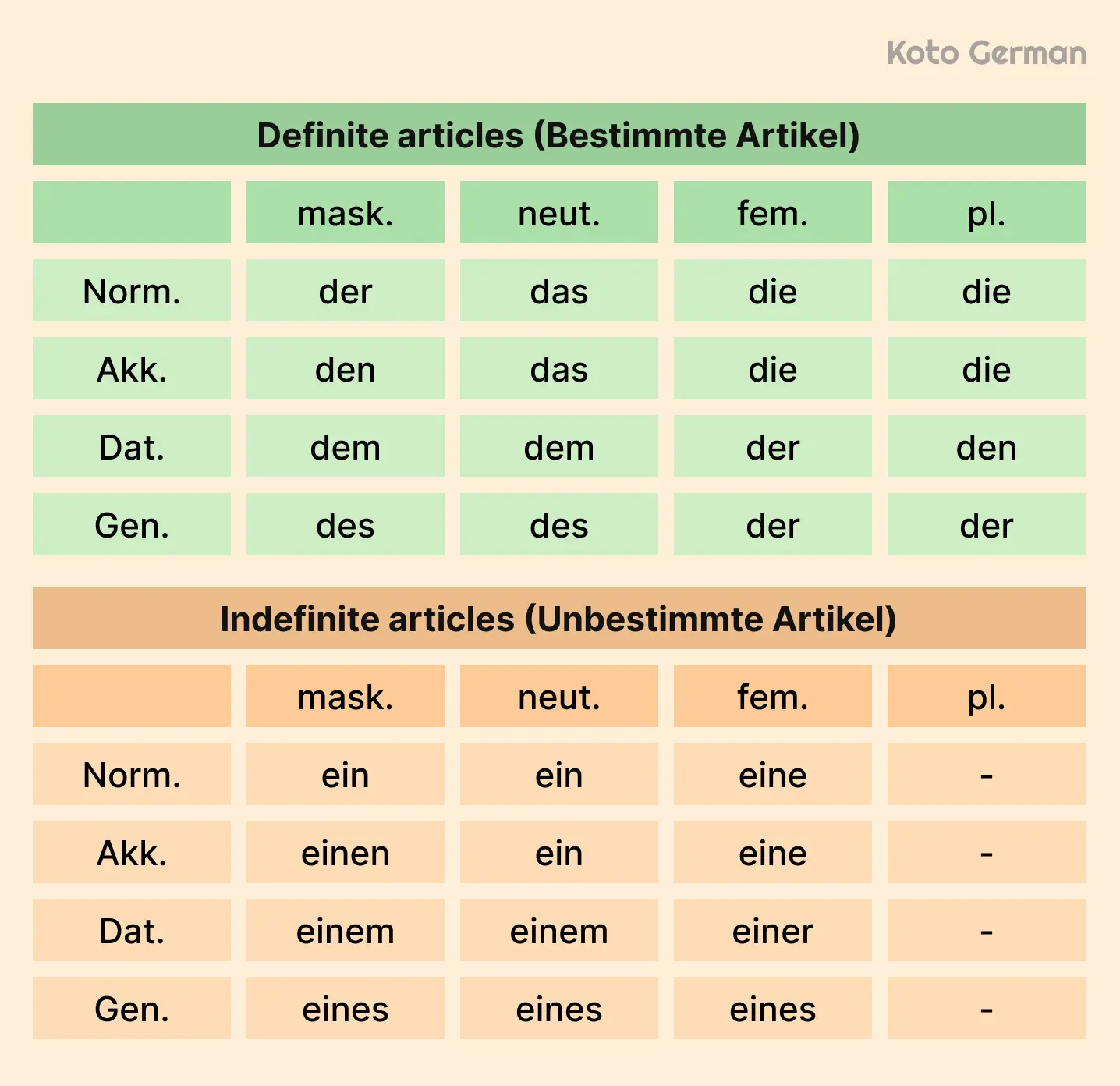
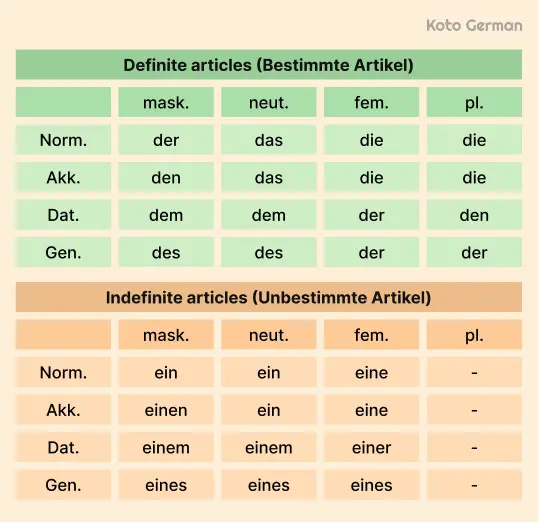
Definite articles (Bestimmte Artikel)
As we mentioned earlier, referring to specific people and objects requires using der, die, and das. They are like three versions of the in German.
| Articles | Gender | Examples |
|---|---|---|
| der | masculine |
|
| die | feminine |
|
| das | neutral |
|
| die | plural, for all |
|
Pay attention to die. It helps you indicate that a noun is feminine when it is singular, but at the same time, if it is plural, you use the same word regardless of gender.
Indefinite articles (Unbestimmte Artikel)
On the contrary, when an object is unknown or it does not matter (the idea of an / a in German), ein comes out on the stage. It has two forms, ein for masculine and neutral, and eine for feminine.
| Article | Gender | Example |
|---|---|---|
| ein | masculine |
|
| eine | feminine |
|
| ein | neutral |
|
From the table above, you could notice that it doesn’t have German plural articles, and that is how it is. When describing several objects that are not specific, no articles are needed. For instance:
Negative article (Kein)
Specifying that something isn’t what a person thinks or someone doesn’t have an item, simply, when negating a noun, you use kein for all these purposes. The following points are significant:


- Gender and case influence the form of a kein. It doesn’t remain the same across different roles it plays in a sentence.
- Kein functions like no, not any, not a in English. I am not a doctor. — Ich bin
kein Lehrer. - Unlike ein/eine, it has a plural form. The feminine, masculine and neutral forms are spelled identically.
| Article | Gender | Examples |
|---|---|---|
| kein | masculine |
Der neue Bau ist
|
| keine | feminine |
Er trinkt
|
| kein | neutral |
Du hast
|
| keine | plural |
|
The difference between kein and nicht is that the first word is tightly connected to nouns. When you negate verbs, adjectives, adverbs, and prepositions, use nicht. It usually goes after the verb, not before.
Whether you create sentences in different verb tenses or parts of speech, case and gender on nicht doesn’t need to be changed.
Articles and the four German cases
We have mentioned several times that some articles in German grammar need to agree with the case, and below you will find a brief overview of each, with examples of how articles change.
There are four cases in German. The Nominative answers the question Wer? Was? (Who or what does an action?). It is the kind of word you see near the subject in many scenarios.
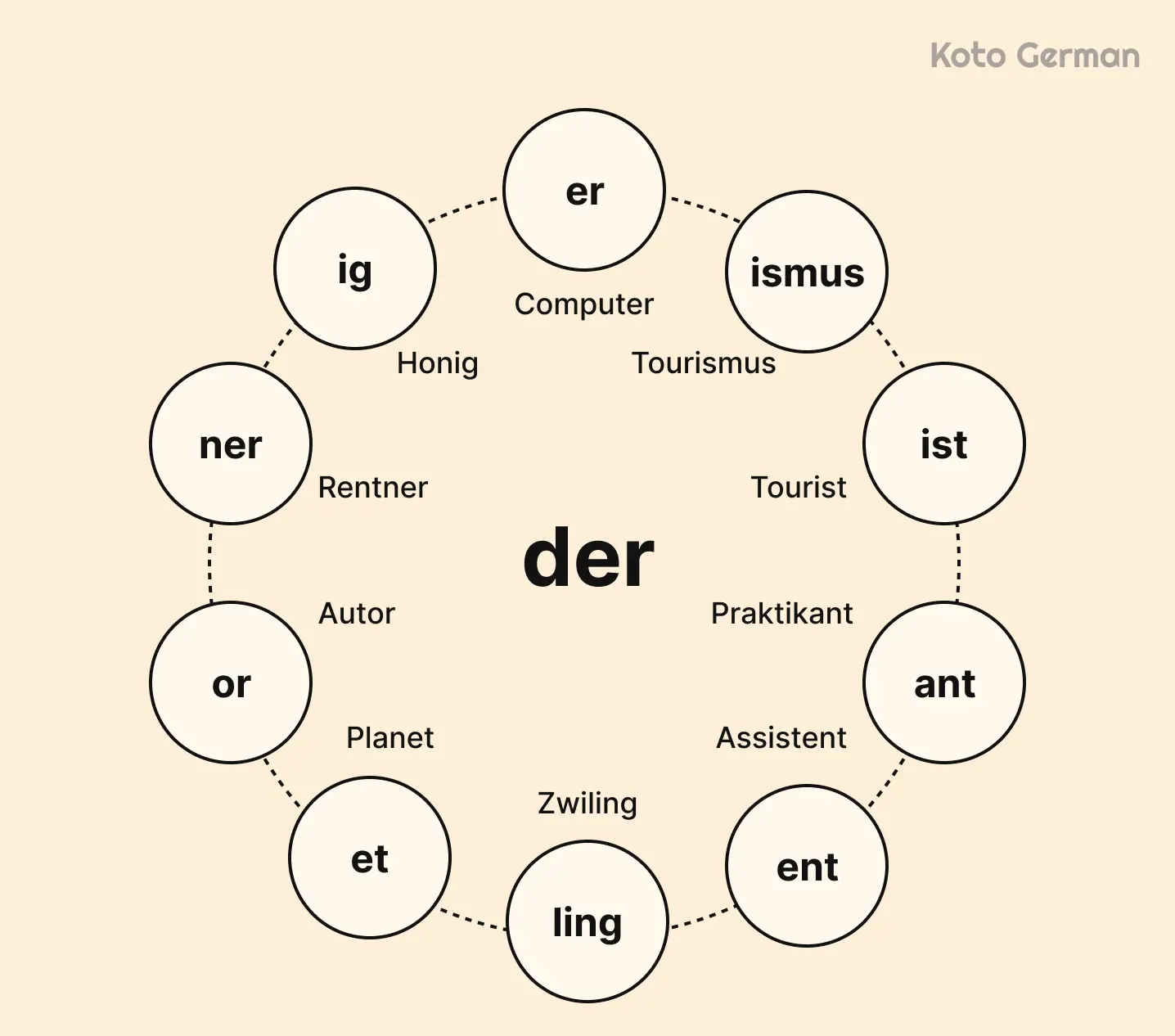
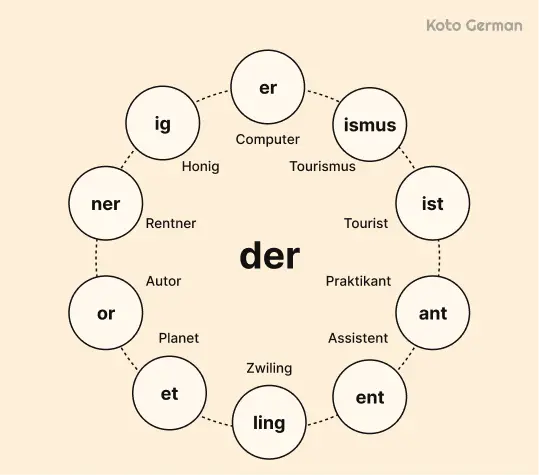
Then goes the Akkusative. Here, the object is what matters. The question words to navigate are Wen? Was?.
The Dative case specifies to whom or to what an action is performed (plays the role of an indirect object). What in English you would say as: I’ve given it to him, or He’s sent a message to his boss, in German it would be told with the Dative.
Needing to indicate possession, you will use the Genitive case. Its usage is checked with the question word Wessen?, and this group of articles helps emphasize the connection between two nouns. Think of it as of in English:
Der, die, das
The declension — change of a word’s form — with definite articles in German happens in this way:
| Case | Masculine | Feminine | Neutral | Plural |
|---|---|---|---|---|
| Nominative | der | die | das | die |
| Akkusative | den | die | das | die |
| Dative | dem | der | dem | den |
| Genitive | des | der | des | der |
While the Nominative and Akkusative forms hardly change, only the masculine form has a slight distinction. The Dative and Genitive variations exhibit significant shifts and should be studied carefully, as they alter the meaning of the sentence, including the indication of possession as described above.
Examples in context:
Ein, eine
Indefinite articles also undergo changes, and they have similar patterns to the definite ones. As you can see, the second column transforms only the masculine form.
| Case | Masculine | Feminine | Neutral | Plural |
|---|---|---|---|---|
| Nominative | ein | eine | ein | No plural form |
| Akkusative | einen | eine | ein | |
| Dative | einem | einer | einem | |
| Genitive | eines | einer | eines |
Above, we have already stated that it doesn’t have plural form, no matter the case or gender.
Examples in context:
Kein, keine
Similar to the previous table, negative indefinite articles in German require careful attention to memorize them and create sentences with them without errors.
| Case | Masculine | Feminine | Neutral | Plural |
|---|---|---|---|---|
| Nominative | kein | keine | kein | keine |
| Akkusative | keinen | keine | kein | keine |
| Dative | keinem | keiner | keinem | keinen |
| Genitive | keines | keiner | keines | keiner |
Examples in context:
Tips to remember articles
Enhancing fluency in using all the German articles calls for particular approaches that are applicable specifically for this language. Regularity and diverse studying resources are essential, but consider also these:
Tip 1. Don’t separate nouns from articles
In German, nouns without articles are like words without endings. With the variety of complex rules, they will shed light on the number of items, their gender, role, and so on. Studying new vocabulary without them leaves out all this useful information. Keep it attached and stored in your memory as a single chunk, to be sure that you opt for a safe option.
Tip 2. Recognize patterns and create mnemonic images
Some groups of nouns follow particular routes. For example, speaking of days, months, seasons, men, their professions, compass navigation and weather, you will most likely use masculine articles. Particular flowers, trees, ships and numbers are feminine. Some animals, especially babies, nouns with a foreign origin, and colors are neutral (with exceptions like die Pizza, die SMS, der Computer and der Champagner).
When words fall out of categories, try to create weird associations with them, incorporating masculine or feminine features.
Tip 3. Memorize common suffixes for fast recall
Word endings are strong pointers in relation to which German language articles you will be required to pick. Nouns ending in -ant, -er, -ich, – or, – ist, -ig, -ling, -or, and -us are typically masculine. For example, der Diamant, der Lehrer, der Honig, der Polizist, der Motor, der Zirkus.
Suffixes, such as -ei, -heit, -keit, -ie, -in, -ik, -shaft, – tion, -ung, -ur, and tät are characteristics of female nouns. For instance, die Lektion, die Musik, die Polizei, die Lehrerin, die Realität, and many others.
When words end with -o, -chen, -lein, – ment, -nis, -tum, -um, it is peculiar to neutral nouns. You can see it in these examples: das Brötchen, das Experiment, das Wagnis, das Radio, das Zentrum.
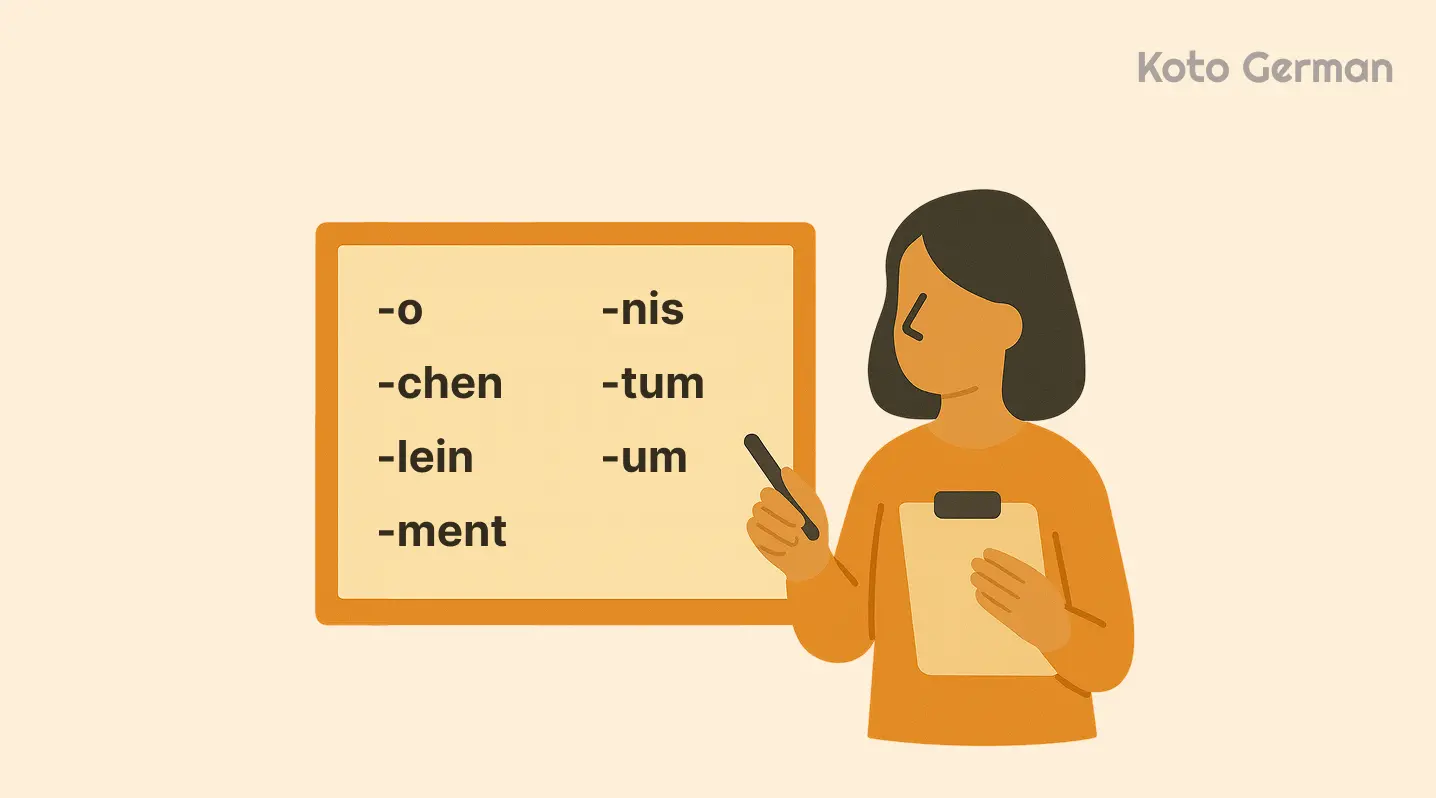
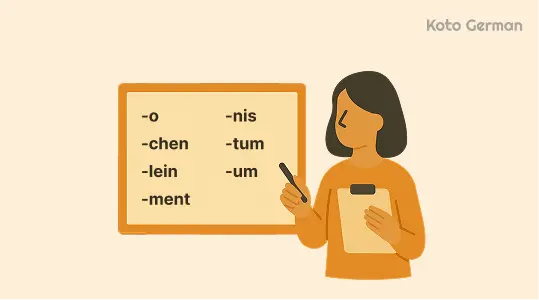
Common mistakes learners make
The topic is much more complex than it is in English, so it requires regular practice and knowledge of the trickiest areas that even experienced learners may find difficult. With such a large number of possibilities, it is predictable that errors may occur when choosing definite and indefinite articles and selecting the correct gender form.
Below, you will find the most frequent mistakes and their corrections to avoid them.
Plural confusion
It is not always possible to determine whether a noun is in a plural or singular form, because it has more than one ending, sometimes umlauts are added, and in some cases, nouns don’t change at all. That’s where a lot of oversights happen, so you need to be cautious, and when learning new words, check their plural forms as well. You can see this example in words like der Apfel — die Äpfel.
|
Der Lehrer sind nett.
|
Die Lehrer sind nett.
|
|
Das Kinder spielen Fußball.
|
Die Kinder spielen Fußball.
|
No plural form
Some nouns in the German language don’t have plural forms at all, they are always singular, even if it is about words like die Polizei (when speaking about several people, like team, staff and so on). In this case, you don’t need to use plural versions of verbs or pronouns with such words.
|
Die Polizei sind hier.
|
Die Polizei ist hier.
|
|
Die Gemüsen sind frisch.
|
Das Gemüse ist frisch.
|
Confusing the gender of a noun
Remembering der for male people and professions and die for female categories may stick quickly. Still, the neutral gender is a tricky one, especially if you don’t have it in your native language. Objects have genders as well, and they don’t follow the logic of other languages.
|
Der Mann liest das Zeitung.
|
Der Mann liest die Zeitung.
|
|
Wo ist die Buch?
|
Wo ist das Buch?
|
Ignoring meaning: Der See vs. Die See
This is the case when using the wrong article can lead to misunderstanding between speakers. The same word can be used with both articles, but its meaning changes, as der See is the lake and die See is the ocean or the sea. It is common for other groups of nouns, such as der Leiter (the manager) and die Leiter (the ladder) or der Kiefer (jaw) and die Kiefer (pine tree). Guessing is rarely optional; strong knowledge is preferable.
|
Im Winter ist die See oft zugefroren.
|
Im Winter ist der See oft zugefroren.
|
|
Der Nordsee ist oft rau.
|
Die Nordsee ist oft rau.
|
Forgetting exceptions: Das Mädchen
The ending of nouns can be more significant when choosing an article than the gender it belongs to. It is applied to the word Das Mädchen (the girl). Why is it neutral, not feminine? Because the words with the ending -chen, which is used to emphasize affection, are always neutral, even when you describe nouns with masculine and feminine meanings.
|
Die Mädchen liest ein Buch.
|
Das Mädchen liest ein Buch.
|
|
Die Kätzchen trinkt Milch.
|
Das Kätzchen trinkt Milch.
|
Enjoy personalized learning!
Practice quiz: Test your article knowledge
What is a German article and how to use it? Let’s now check your understanding with interesting interactive exercises. Read questions, think of variations, and pick the right answers. If you made a mistake, don’t worry. Repeat the rules once more and try to answer again.
Conclusion
With practice comes perfection. Try to read a lot and write sentences with articles in the German list, taking into account the examples we outlined. Making them true for you, but following the structures, you will be able to understand the difference between articles fully and produce your units without much guessing.
The key to fluent speaking is taking nouns and articles as a unified item and learning them together. Also, be attentive to all possible forms. It will give you the opportunity to grasp more words and once. Look for the patterns.
They are not always as encompassing as in English, but they exist in details, such as common endings and groups of nouns. The more you read, listen, and repeat, the quicker you will feel confident with the natives.
FAQ: Common questions about German articles
Three main articles are chosen by the gender of a noun. They are definite and are close in meaning to the in the German language.
| Article | Used with nouns | Examples in context |
|---|---|---|
| der | masculine |
|
| die | feminine |
|
| das | neutral |
|
The article die is also used to emphasize the plural of a word. It doesn’t matter what gender a noun has in its singular form; when speaking about more than one person or object, you need to use die. Look at this example: singular — der Mann, plural — die Männer.
There’s no simple instruction that will give you an unmistakable answer on how to point out which article should go with a noun. However, there are rules of structural learning that will prevent you from losing yourself in the variety of choices:
Tip 1. Learn words with the articles
The safest way to select suitable articles is to memorize them with each separate word. Opt for materials that allow you to create cards and quizzes using the list of German articles. The more you see words with the right article, the better you recall them.
Tip 2. Check a dictionary
Need to be sure about an article? Use a reputable German dictionary. There you will find examples, definitions, and, of course, corresponding articles for all possible cases. Usually, letters f, m, or n will direct you.
Yes, and it happens with each case, so it is essential to study all forms to be able to use them effortlessly. The Nominative and Akkusative parts are very similar, while the Dative and Genitive exhibit notable distinctions.
It will be much easier to navigate through the German articles list if you read a lot in German and create your own sentences with them all.
Both kein and nicht are used to make negation sentences, but their roles indeed differ. Kein is similar to no or not a/an in English. You apply it as an indefinite German article to a noun in order to negate it. This example will show you its meaning:
As you can see, it changes its form. Kein should be modified based on the gender of a noun and the case.
Nicht is like not in English. It helps negate the rest of the parts of speech. The same form is used with all cases and genders. One significant distinction is that nicht goes after the verb:
In summary, kein is with nouns, and nicht befriends with verbs, adverbs, and whole sentences.




